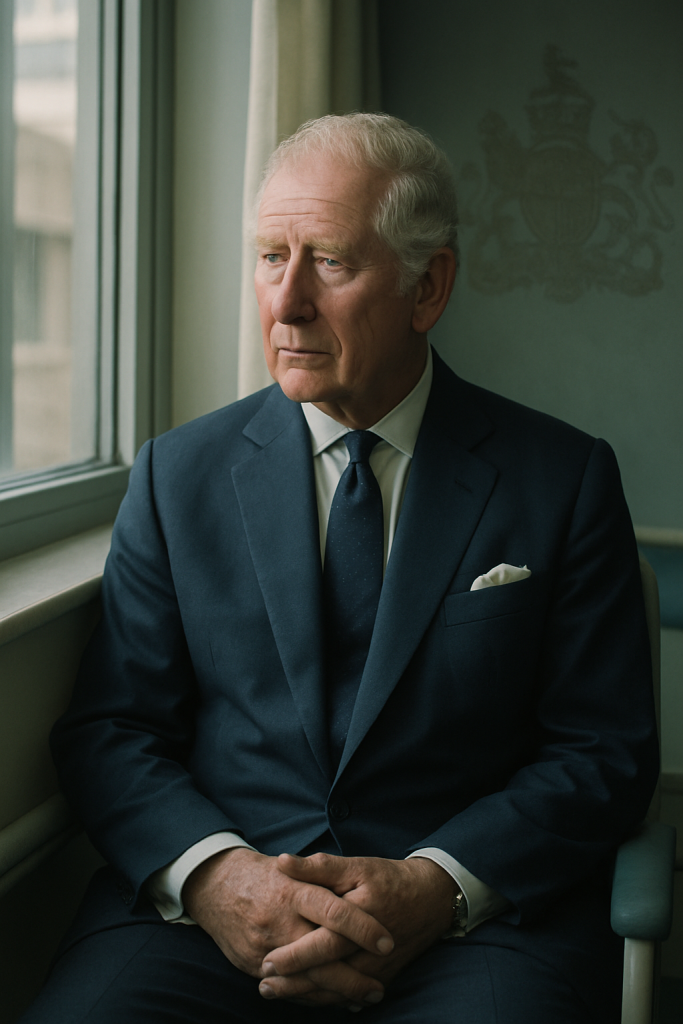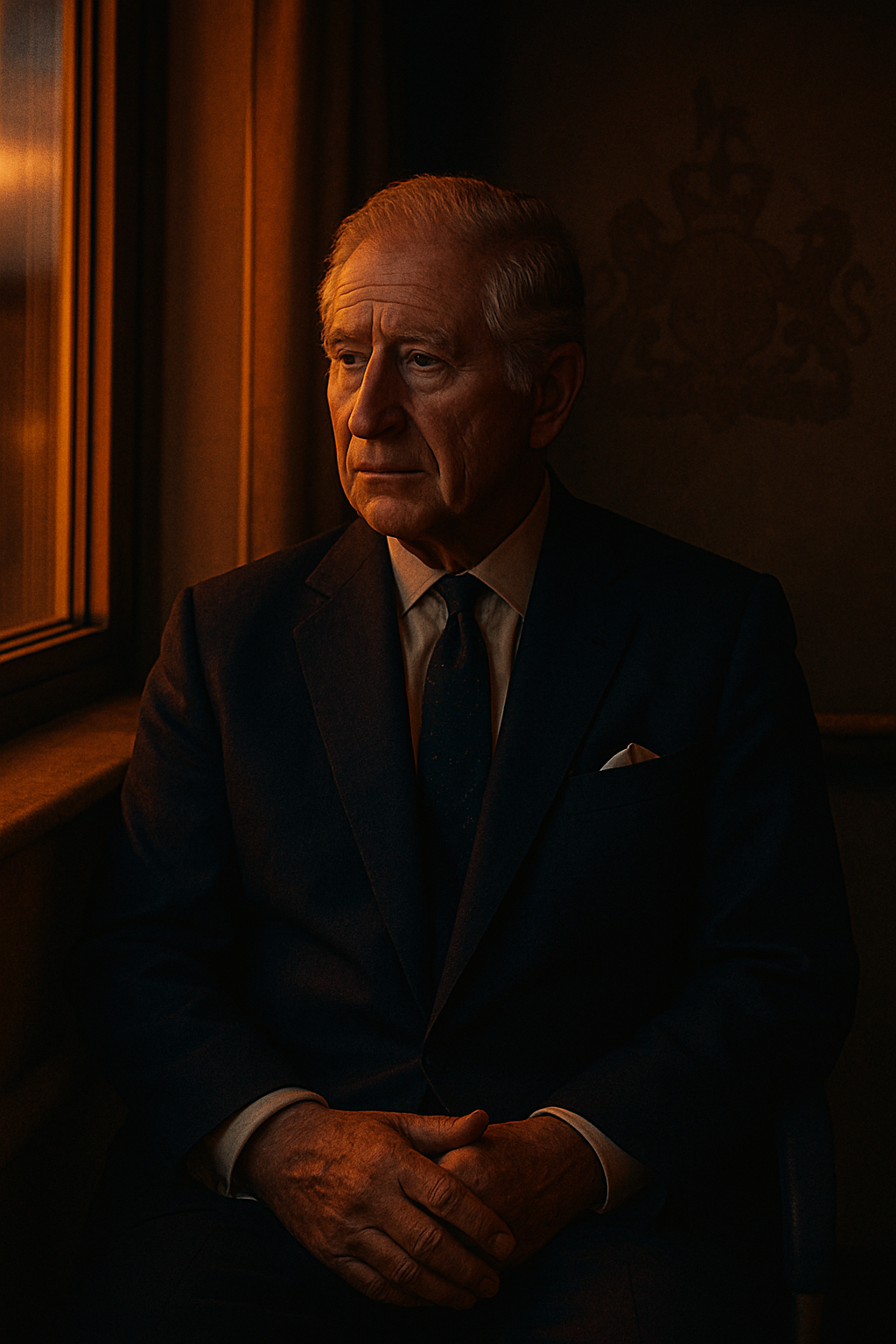In January 2025, Buckingham Palace confirmed shocking news: King Charles III had been diagnosed with cancer. This announcement sparked global concern, as millions wondered about the monarch’s health and the future of the British monarchy. According to the official statement, the cancer was detected during a routine hospital procedure. While the Palace withheld specifics about the cancer type, they assured the public that it was treatable and caught early. This transparency was unprecedented, especially given royal history’s tendency toward secrecy in health matters.
King Charles’s openness encouraged many facing similar battles, highlighting the importance of early detection and regular screenings. His candid approach set a powerful example for public health in the UK and beyond. As 2025 unfolds, King Charles continues to champion early detection and awareness from within the walls of Windsor Castle.
Navigating Treatment: Inside the Monarch’s Brave Health Journey
Choosing a Personalized Treatment Plan With Top UK Specialists
Following his diagnosis, King Charles consulted a panel of oncology experts from London’s leading hospitals, including the Royal Marsden. After reviewing options, the King chose a targeted therapy approach that minimized side effects while maximizing recovery. His team of doctors tailored treatments to his health history and genetics, ensuring he could maintain key responsibilities.
Reports confirm that he underwent immunotherapy and low-intensity chemotherapy, designed to attack cancer cells without severely weakening his immune system. Each treatment cycle was followed by periods of rest at Sandringham and Highgrove House. Despite fatigue, he stayed engaged in select royal duties, including weekly briefings with Prime Minister Rishi Sunak.
This balance between health and responsibility demonstrated his deep commitment to duty and transparency. It also showed the world that undergoing treatment doesn’t mean stepping away from life’s core responsibilities.

Family Support: How the Royal Family United Behind the King
Prince William, Princess Kate, and Queen Camilla Take the Lead
As King Charles focused on healing, his family became his strongest pillars. Queen Camilla immediately adjusted her schedule, taking over many ceremonial duties. She remained by the King’s side during treatments and public updates. Prince William and Princess Kate took on expanded roles, representing the monarchy at key 2025 events like Commonwealth Day and the Royal Ascot.
Even Prince Harry, despite past tensions, visited his father in February and again in May. Their short but emotional meeting at Clarence House sparked speculation of reconciliation. This gesture showed that family unity can rise above royal protocol during personal crises.
Royal watchers also noticed how the King’s siblings—Princess Anne and Prince Edward—stepped up to attend regional charity events. In public statements, they praised their brother’s resilience. This powerful show of solidarity highlighted the family’s collective strength during adversity.
Public Reaction and National Impact of the King’s Illness
Public Sympathy, Media Restraint, and Record Charitable Support
Upon hearing the news, the UK public responded with an overwhelming outpouring of love and prayers. Thousands left flowers and handwritten notes outside royal residences, and Buckingham Palace received over 100,000 letters within the first week. The British media, often criticized for relentless coverage, showed unusual restraint and empathy.
Several cancer-related charities, such as Macmillan Cancer Support and Cancer Research UK, reported a 30% surge in donations and volunteers in Q1 of 2025. This rise is known as “The Charles Effect.” Many public figures praised the King for his bravery, including Prime Minister Sunak and opposition leader Keir Starmer, who issued bipartisan messages of support.
The King’s health challenges triggered nationwide conversations around cancer awareness, emotional resilience, and compassionate leadership. It reminded citizens that strength and vulnerability can coexist, even for someone who wears a crown.
King Charles’s Message of Hope and Resilience
Embracing a New Role as Cancer Awareness Advocate
In a rare televised address in March 2025, King Charles shared heartfelt reflections about his journey. Speaking directly from Windsor, he thanked citizens, medical staff, and his family. He spoke candidly about his fears and daily struggles, emphasizing the importance of mindset and medical access.
The King used his platform to raise awareness about early detection, advocating for routine checkups and better healthcare equity. His message wasn’t just a royal speech—it was a deeply human moment. Viewers described it as one of the most relatable addresses from the monarchy in decades.
This new chapter in his reign redefined royal leadership. By being vulnerable, Charles showed that strength isn’t just about appearance—it’s about honesty, courage, and the will to fight forward.
What This Means for the Monarchy in 2025
A Stable Future Through Shared Responsibility and Modernization
Despite health concerns, the monarchy remains stable. King Charles continues to fulfill constitutional roles, albeit in a more limited capacity. Royal aides confirmed that a “shared monarchy” approach has been adopted, with key responsibilities delegated to senior royals.
This model reflects Charles’s long-standing vision for a “slimmed-down monarchy,” emphasizing transparency, cost-efficiency, and modern relevance. It also prepares the public for a future under Prince William’s leadership, should a regency ever be required.
Experts from The Royal Institute of International Affairs agree: “The King’s illness has strengthened, not weakened, the monarchy by making it more human.” As Charles continues his recovery, the monarchy evolves—guided by unity, compassion, and public trust.
Frequently Asked Questions (FAQ)
What type of cancer does King Charles have in 2025?
The Palace hasn’t disclosed the specific cancer type but confirmed it was detected early and is being actively treated.
s King Charles stepping down due to cancer?
No. While reducing public duties, King Charles remains monarch and continues fulfilling constitutional responsibilities.
Has King Charles spoken publicly about his cancer?
Yes, he delivered a televised message in March 2025, sharing personal reflections and encouraging early detection.
How has the Royal Family supported King Charles during treatment?
Queen Camilla, Prince William, and others have taken on extra duties while supporting Charles emotionally and publicly.


